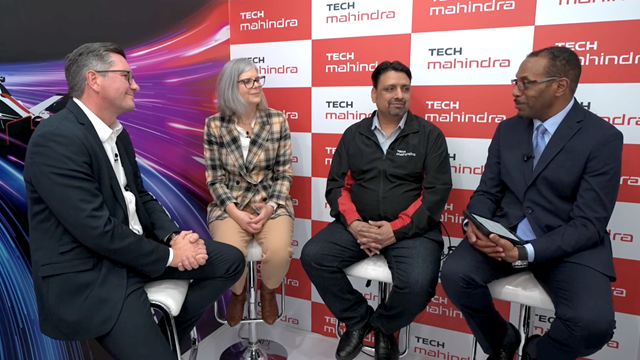To embed our video on your website copy and paste the code below:
<iframe src="https://www.youtube.com/embed/79iz6ZuDzfo?modestbranding=1&rel=0" width="970" height="546" frameborder="0" scrolling="auto" allowfullscreen></iframe>
Inma Rodriguez, VP Telecom Core & Cloud Solution and Service Line, Europe & Latin America Ericsson
Ericsson already has 19 live 5G networks up and running and the company has found that the deployment of 5G technology is happening much more quickly than anticipated. However, it should be remembered that 5G is not just about radio. The core network remains vitally important and the key to its successful evolution is the ability to manage the myriad or traffic cases and use cases that 5G will be called upon to handle.
Inma Rodriguez says that Ericsson has learned many lessons from implementing the 5G contracts it has secured and the ongoing work it is undertaking, perhaps the most important of which is the absolute need for a working NFVi (Network Functions Virtualisation infrastructure). This is a telco cloud platform on which virtual network functions (VNFs) and applications are deployed. The NFV infrastructure runs telecom, OSS, BSS, media and many types of IoT applications. NFVi is defined by ETSI as part of the NFV specification.
There is general agreement within the telco industry on the need to move to NFVi to enable new revenue opportunities and operational costs savings. Ericsson's belief is that whilst it may be seductive to think that a decoupled solution would be the best way to succeed with NFVi, a total system is what is really needed for successful evolution to 5G.
As Inma Rodriguez points out, a complete NFVi allows scaling, the handling of different types of traffic, automation, orchestration, and operations and services deployments. Furthermore, NFVi must evolve into different geographical sites because the network is expanding closer to the end user, to the Edge, wherever the edge may be. And then last, but by no means least, is the requirement to change operations and business processes to handle 5G.
5G is a great enabler of new business opportunities so CSPs should be very actively engaged in building an ecosystem with enterprises because the trend is to networks that are specific to enterprise use cases. Ericsson believes the way forward is to implement today a solution today that can easily be evolved with container management capabilities for a multitude of 5G and IoT opportunities. And for the all-important edge opportunities the company offers the Ericsson Edge NFVI which is a small yet powerful solution optimised to handle distributed workloads.
Filmed at SDN NFV World Congress, The Hague, 2019
Email Newsletters
Sign up to receive TelecomTV's top news and videos, plus exclusive subscriber-only content direct to your inbox.




